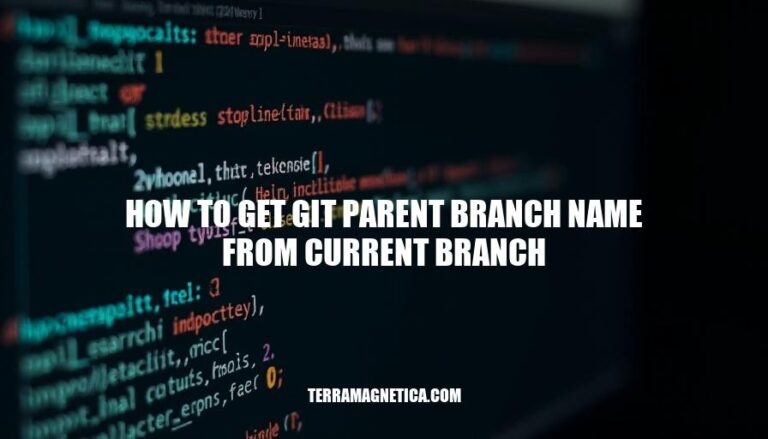


Git, the ubiquitous version control system, forms the backbone of countless software development workflows. Understanding how to retrieve the parent branch name from the current branch can be incredibly valuable for developers. This knowledge is essential when merging changes, reviewing code, or debugging issues, ensuring smooth collaboration and efficient project management.
Knowing the parent branch facilitates the tracking of changes and the resolution of conflicts, ultimately streamlining the development process.
First command:
git reflog
Purpose: Displays a log of all the references to your branches and commits. It shows you a list of actions you’ve performed in your repository, such as commit, pull, and merge, allowing you to see the history of your branches.
Second command:
git show-branch
Purpose: Shows the branches and their commits. This command visualizes the branch structure and its commits, helping you understand where your current branch stands in relation to others.
Third command:
git rev-parse --abbrev-ref HEAD
Purpose: Retrieves the name of the current branch.
The --abbrev-ref HEAD part tells Git to give you the abbreviated name of the current branch instead of the commit hash.
Fourth command:
git merge-base $(git rev-parse --abbrev-ref HEAD) $(git for-each-ref --format='%(refname:short)' refs/heads/)
Purpose: Finds the best common ancestor (merge base) between your current branch and all the other branches. The git merge-base command finds the point at which your current branch diverged from its parent branch.
Finally, the parent branch can be deduced from the output of the previous commands. By identifying the common ancestor and looking at the commit history, you can pinpoint the parent branch.
Every command here builds on the previous one to help you trace back through your commit history and understand the relationship between your current branch and its parent branch.
This exploration process involves checking references, branch histories, and merge bases.
To get the parent branch name from the current branch using a custom Git script, follow these steps:
Create a new script file: Open your terminal and create a new file named get_parent_branch.sh in your preferred directory.
touch get_parent_branch.sh
Make the script executable: Change the file permissions to make it executable.
chmod +x get_parent_branch.sh
Open the script file: Open get_parent_branch.sh in your favorite text editor (e.g., nano, vim, or code).
nano get_parent_branch.sh
Add the following script to the file:
#!/bin/bash
# Get the current branch name
current_branch=$(git rev-parse --abbrev-ref HEAD)
# Get the parent branch name
parent_branch=$(git for-each-ref --format='%(upstream:short)' $(git symbolic-ref -q HEAD))
# Check if a parent branch is found
if [ -z "$parent_branch" ]; then
echo "No parent branch found for the current branch ($current_branch)"
else
echo "Parent branch of $current_branch is $parent_branch"
fi
Save and close the script file.
Run the script: Navigate to the directory containing your Git repository and execute the script.
./get_parent_branch.sh
The script captures the current branch name and retrieves the parent branch name using Git’s ref-log. If no parent branch is found, it informs you. Otherwise, it displays the parent branch name.
Feel free to tweak this script to suit your needs!
Branch names could differ due to typographical errors or inconsistent naming conventions. Ensuring standardized naming practices can mitigate this. Detached HEAD states can pose issues; navigating to an appropriate branch before attempting any operations is crucial.
If a repository has extensive branching, navigating the branch tree becomes cumbersome; utilizing commands like git show-branch can simplify this. Repositories with an intricate merge history might produce convoluted outputs. Clarifying the branch lineage by inspecting commit messages aids in comprehension.
Ensuring up-to-date information with git fetch avoids misleading data.
Lastly, scripts or tools might not behave as intended when deployed in varied environments. Testing in multiple setups to ensure uniform functionality helps catch these discrepancies early.
You can use various Git commands such as git reflog, git show-branch, git rev-parse --abbrev-ref HEAD, and git merge-base to track changes, resolve conflicts, and streamline development processes.
A custom Git script can also be created to automate this process. The script captures the current branch name and retrieves the parent branch name using Git’s ref-log.
Ensuring standardized naming practices, navigating detached HEAD states, and utilizing commands like git show-branch are crucial for effective branching management.
Regularly updating information with git fetch and testing scripts in multiple environments can also help avoid discrepancies.